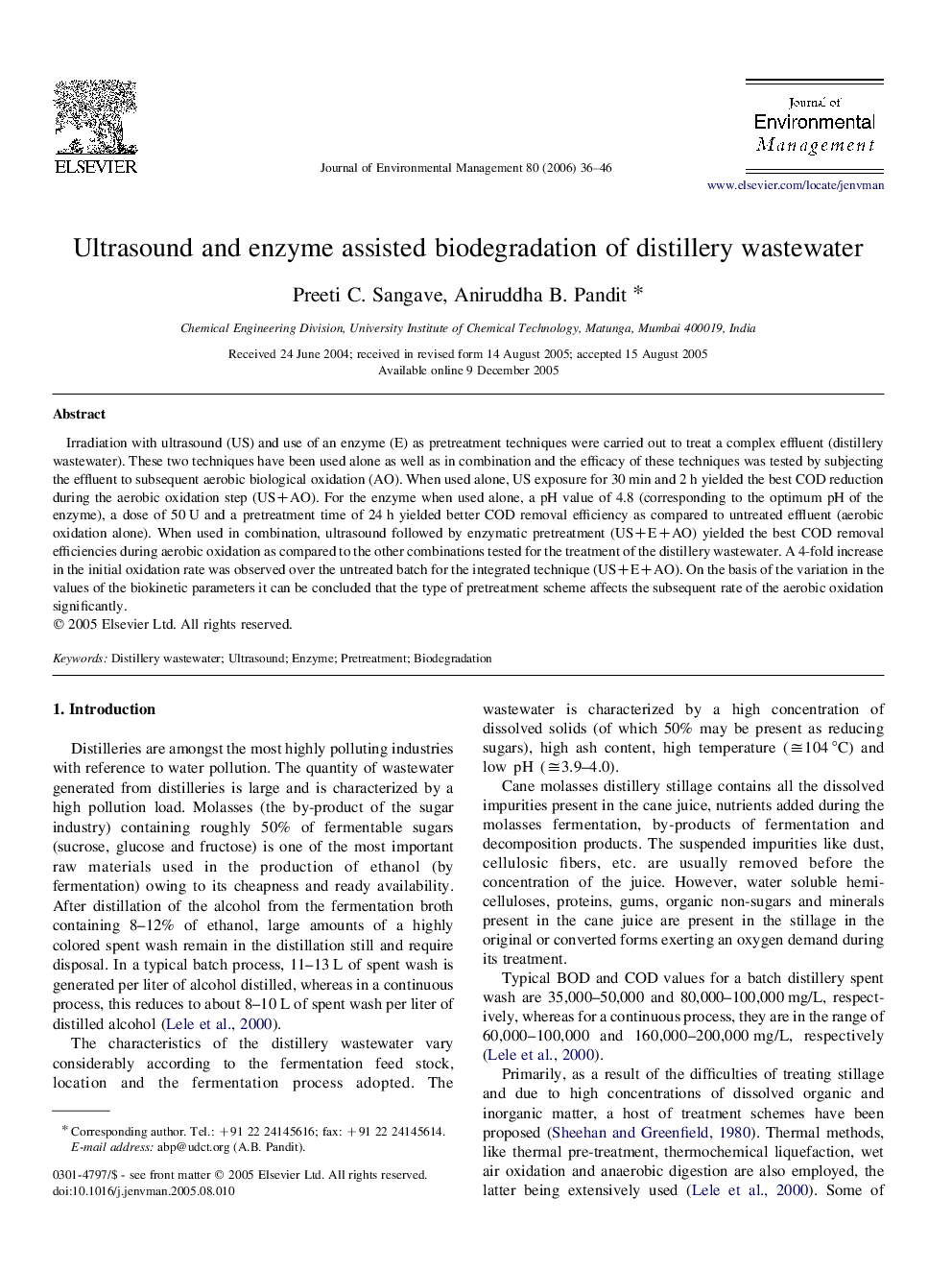| Article ID | Journal | Published Year | Pages | File Type |
|---|---|---|---|---|
| 1058933 | Journal of Environmental Management | 2006 | 11 Pages |
Irradiation with ultrasound (US) and use of an enzyme (E) as pretreatment techniques were carried out to treat a complex effluent (distillery wastewater). These two techniques have been used alone as well as in combination and the efficacy of these techniques was tested by subjecting the effluent to subsequent aerobic biological oxidation (AO). When used alone, US exposure for 30 min and 2 h yielded the best COD reduction during the aerobic oxidation step (US+AO). For the enzyme when used alone, a pH value of 4.8 (corresponding to the optimum pH of the enzyme), a dose of 50 U and a pretreatment time of 24 h yielded better COD removal efficiency as compared to untreated effluent (aerobic oxidation alone). When used in combination, ultrasound followed by enzymatic pretreatment (US+E+AO) yielded the best COD removal efficiencies during aerobic oxidation as compared to the other combinations tested for the treatment of the distillery wastewater. A 4-fold increase in the initial oxidation rate was observed over the untreated batch for the integrated technique (US+E+AO). On the basis of the variation in the values of the biokinetic parameters it can be concluded that the type of pretreatment scheme affects the subsequent rate of the aerobic oxidation significantly.
